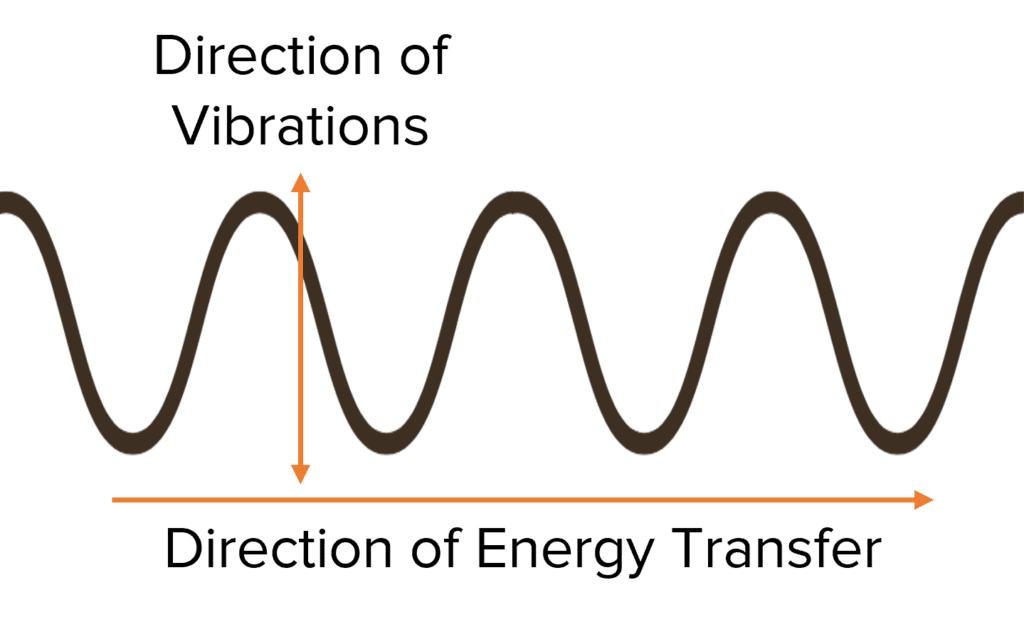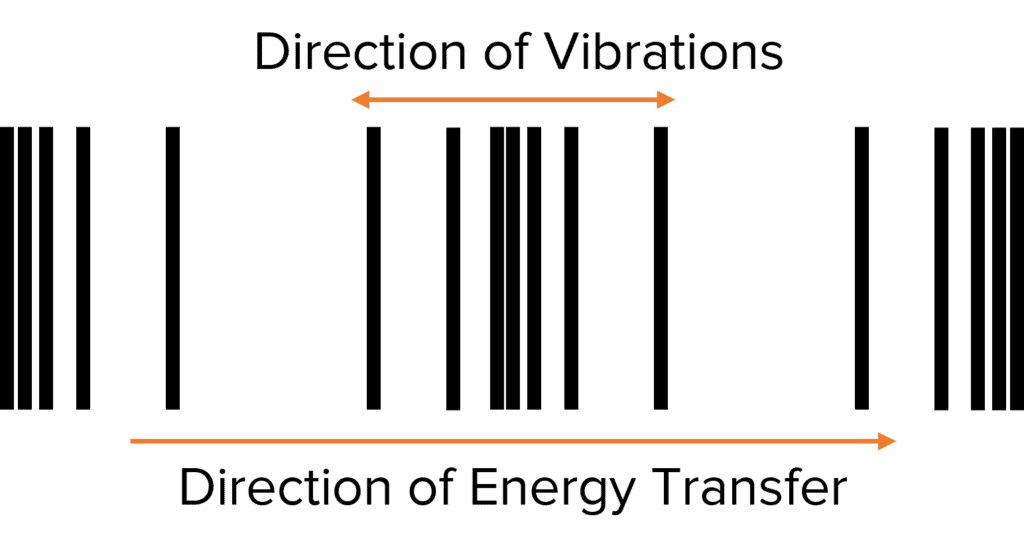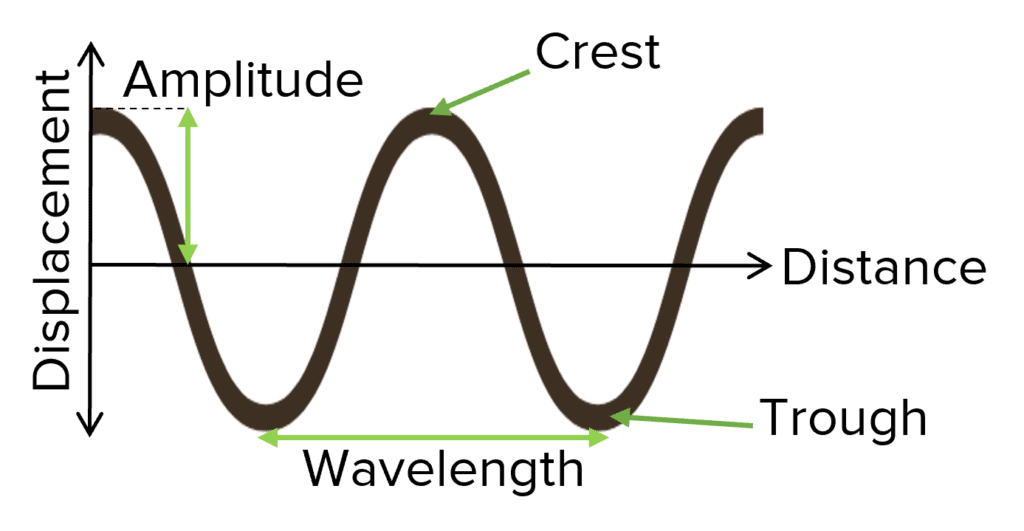Types of Waves
Types of Waves Revision
Types of Waves
Waves transfer energy from one place to another. There are many different types of waves, from mechanical waves and sound waves to electromagnetic waves, all of which can be used for different things.
Transverse and Longitudinal Waves
When a wave travels through a medium (e.g. air or water), the particles in that medium vibrate. The particles transfer energy from one another as they vibrate. This transfers energy between particles but the particles themselves stay in the same place.
Remember: waves transfer energy but not matter.

In transverse waves, the vibrations of the particles are perpendicular to the direction of energy transfer.
Transverse waves have crests and troughs where particles have been displaced a maximum amount from their positions.
Examples of transverse waves are water waves, waves on a string, and electromagnetic waves.

In longitudinal waves, vibrations of the particles are parallel to the direction of energy transfer.
Longitudinal waves have compressions where particles are squashed together, and rarefactions where particles spread apart due to the vibrations.
Examples of longitudinal waves are sound waves and seismic P-waves.
Properties of Waves

You need to know the following wave properties:
- Amplitude – the maximum displacement of a point on the wave from its undisturbed position.
- Wavelength – the distance from a point on one wave to the equivalent point on the next wave (e.g. crest-to-crest or trough-to-trough).
- Frequency – the number of waves passing a point per second.
You need to be able to calculate other wave properties.
Firstly, the period of a wave is the amount of time it takes a complete wave to pass a point. It can be calculated using the following equation:
\textcolor{f21cc2}{T=\dfrac{1}{\text{f}}}
- T is the time period in seconds \text{(s)}.
- f is the frequency in Hertz \text{(Hz)}.
The wave speed is the speed at which energy is transferred through the medium. It can be calculated using:
\textcolor{f21cc2}{v=f \lambda}
- v is the velocity in metres per second \text{(m/s)}.
- f is the frequency in hertz \text{(Hz)}.
- \lambda is the wavelength in metres \text{(m)}.
Changing Wave Properties
Wave properties are inter-related. This means that if you change one wave property, another may change too.
For example, if you increase the frequency of a wave, you also increase the wave velocity and decrease the period.
If you increase the wavelength (whilst keeping the frequency constant) you also increase the wave velocity.
Example: Calculating Wave Properties
A wave has wavelength 50\text{ cm} and wave speed 300\text{ m/s}. Calculate the frequency and period of this wave.
[4 marks]
To calculate f, we need the equation:
v=f\lambda
Rearrange for f:
\begin{aligned}f&=\dfrac{v}{\lambda} \\ &=\dfrac{\textcolor{f21cc2}{300}}{\textcolor{aa57ff}{0.5}} \\ &= \bold{600\textbf{ Hz}} \end{aligned}
Now calculate the period:
\begin{aligned}T&=\dfrac{1}{f} \\ &=\dfrac{1}{600} \\ &=\bold{0.002}\textbf{ s} \text{ (1 sf)} \end{aligned}
Types of Waves Example Questions
Question 1: What is the difference between transverse and longitudinal waves?
[2 marks]
In transverse waves, the direction of vibration is perpendicular to the direction of energy transfer whereas in longitudinal waves, the direction of vibration is parallel to the direction of energy transfer.
Question 2: Is the following statement true or false? Explain your answer.
“Waves transfer energy and matter“?
[2 marks]
False.
Waves transfer energy but not matter.
Question 3: What is the wave velocity of a wave with frequency 5\text{ Hz} and wavelength 2\text{ m}?
[2 marks]
Question 4: If the frequency of a wave is 10\text{ Hz}, what is the period of the sound wave?
[2 marks]






